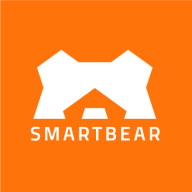

MuleSoft API Manager and SwaggerHub compete in the API management and documentation space. MuleSoft offers more extensive control with comprehensive API management tools, while SwaggerHub is noted for its intuitive design and collaborative features.
Features: MuleSoft API Manager provides enhanced security models, deep system integration, and a wide range of connectors for seamless enterprise environments. Its flexible deployment supports both cloud and on-premise options. The ability to manage APIs with a robust set of management tools is a highlight for enterprise scalability. SwaggerHub excels in simplifying API creation and documentation, offering a streamlined process that supports team collaboration and API versioning. Its ease of use makes it suitable for smaller teams needing quick and efficient API management solutions.
Room for Improvement: MuleSoft could enhance user-friendliness to appeal to smaller businesses, potentially by offering more straightforward tools for less complex integrations. It could also work on reducing the initial complexity and cost for smaller setups. Improving the learning curve with easier access to training resources could be beneficial. SwaggerHub could expand its feature set to accommodate more extensive integration capabilities like MuleSoft. Enhancing security options for enterprise-level deployments and offering more robust customer service options could improve appeal for larger organizations. Additional customization options for API policies would be beneficial for more advanced users.
Ease of Deployment and Customer Service: MuleSoft provides comprehensive deployment models with strong enterprise support suited for large-scale implementations. It offers robust technical support geared towards large enterprises. SwaggerHub offers a simpler, cloud-based deployment, ideal for quick implementation. It provides straightforward customer support suitable for collaborative team environments.
Pricing and ROI: MuleSoft's pricing is typically higher due to its extensive focus on enterprise-level features, offering potentially greater ROI for companies that require complex solutions. SwaggerHub is more affordable and cost-effective for teams focused on API design and documentation, offering efficient returns for smaller, budget conscious projects.
| Product | Market Share (%) |
|---|---|
| MuleSoft API Manager | 5.0% |
| SwaggerHub | 1.4% |
| Other | 93.6% |


| Company Size | Count |
|---|---|
| Small Business | 16 |
| Midsize Enterprise | 5 |
| Large Enterprise | 43 |
| Company Size | Count |
|---|---|
| Small Business | 3 |
| Large Enterprise | 7 |
Mulesoft API Manager is the portion of the Anypoint Platform that is used for the designing, building, managing, and publishing of APIs. Anypoint Platform uses Mule as its core runtime engine.
Mulesoft API Manager is an extremely versatile solution. It offers users the ability to deploy their APIs in a number of different settings. You can use API Manager on a public cloud, a private cloud, or a hybrid. Additionally, users can use the solution to manage their deployments with ease. A few clicks are all you need to alter your deployment.
Benefits of Mulesoft API Manager
Some of the benefits of using Mulesoft API Manager include:
Reviews from Real Users
Mulesoft API Manager is a highly effective piece of software whose purpose is to enable users to design, build, manage, and publish APIs. It stands out among its competitors for a number of reasons. Two major ones are the ease with which users can connect it to their applications and the high level of value that its support offers. It provides users with the ability to easily connect this solution with whatever program they need to join it with. Users can create connections without having to write code. It offers different types of support which ensure that users have a high level of understanding about the product and how to use it.
PeerSpot user Tolulope A., a technical lead specializing in integration and middleware at a financial services firm, notes the ease with which users can connect Mulesoft API Manager to their applications. He writes, “One good thing about MuleSoft is that they have a lot of connectors to those back-end applications. We don't really need to write code to be able to connect to a database or to connect with SAP. You just need credentials and the connectivity details. Most of the development of what we do is just drag and drop. They're able to connect with applications using standard connectors that are provided by ESB, by MuleSoft.”
The CEO & Co-Founder at a computer retailer notes the value of Mulesoft’s supporting documentation. They write, “The documentation is great; it is always up-to-date and well-presented. If any details are missing, then there is a blog available that contains a lot of details. There are also channels on YouTube to help you better understand the solution and what some of the processes look like.”
SwaggerHub is an integrated API Development platform, built for teams, that brings the core capabilities of the Swagger framework to design, build, document and deploy APIs. SwaggerHub enables development teams to collaborate and coordinate the entire lifecycle of an API with the flexibility to integrate with the toolset of your choice.
We monitor all API Management reviews to prevent fraudulent reviews and keep review quality high. We do not post reviews by company employees or direct competitors. We validate each review for authenticity via cross-reference with LinkedIn, and personal follow-up with the reviewer when necessary.